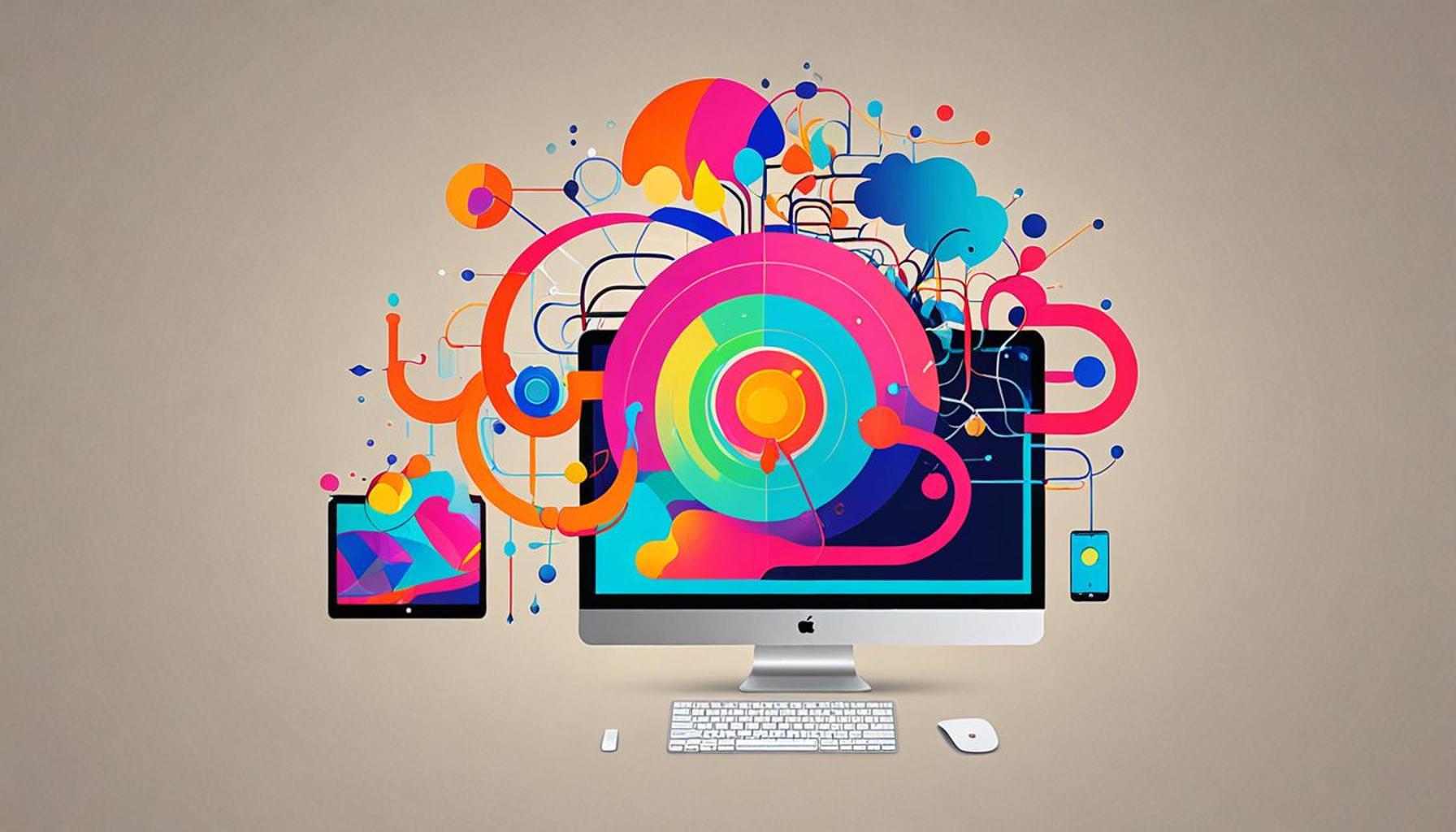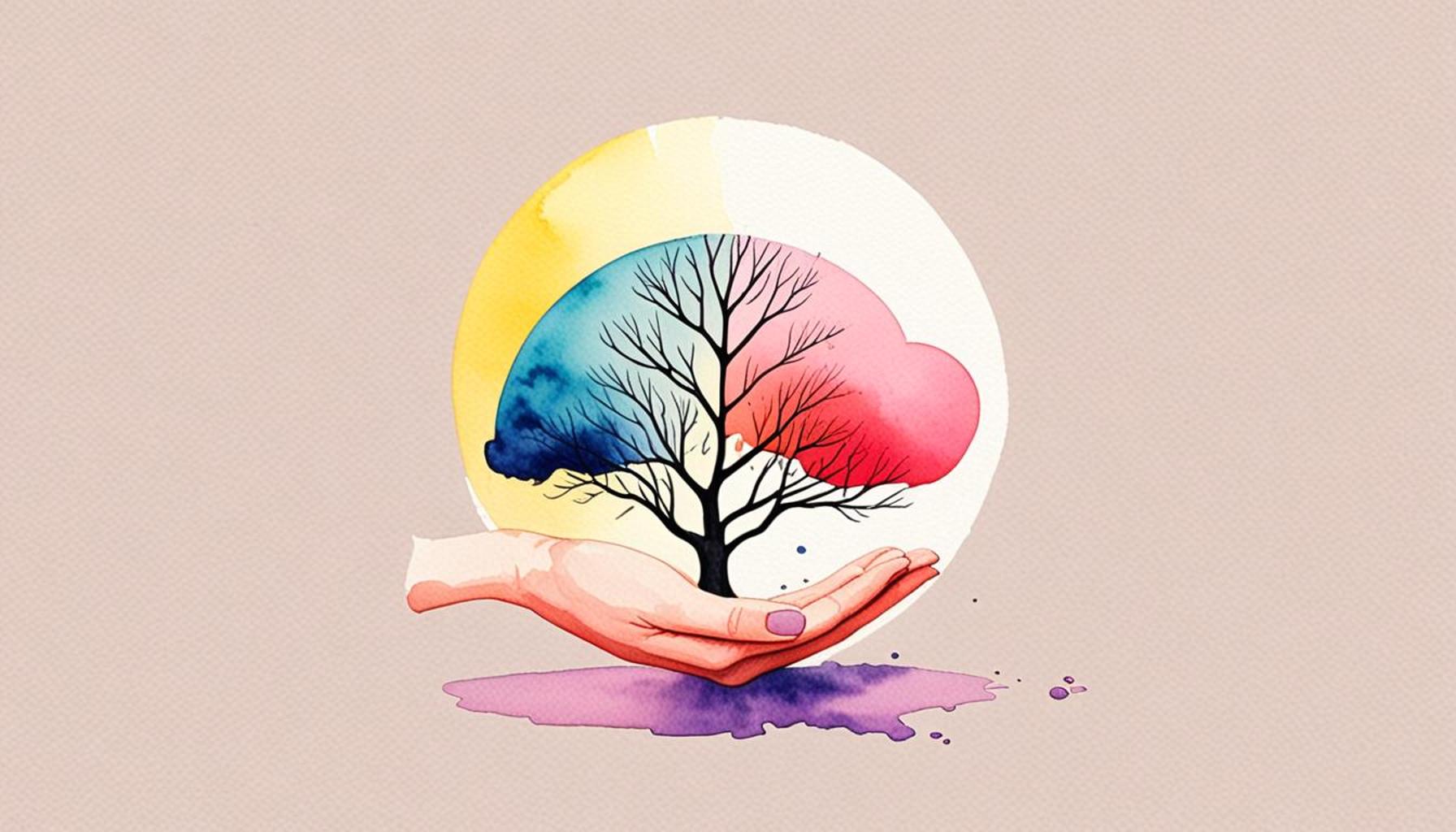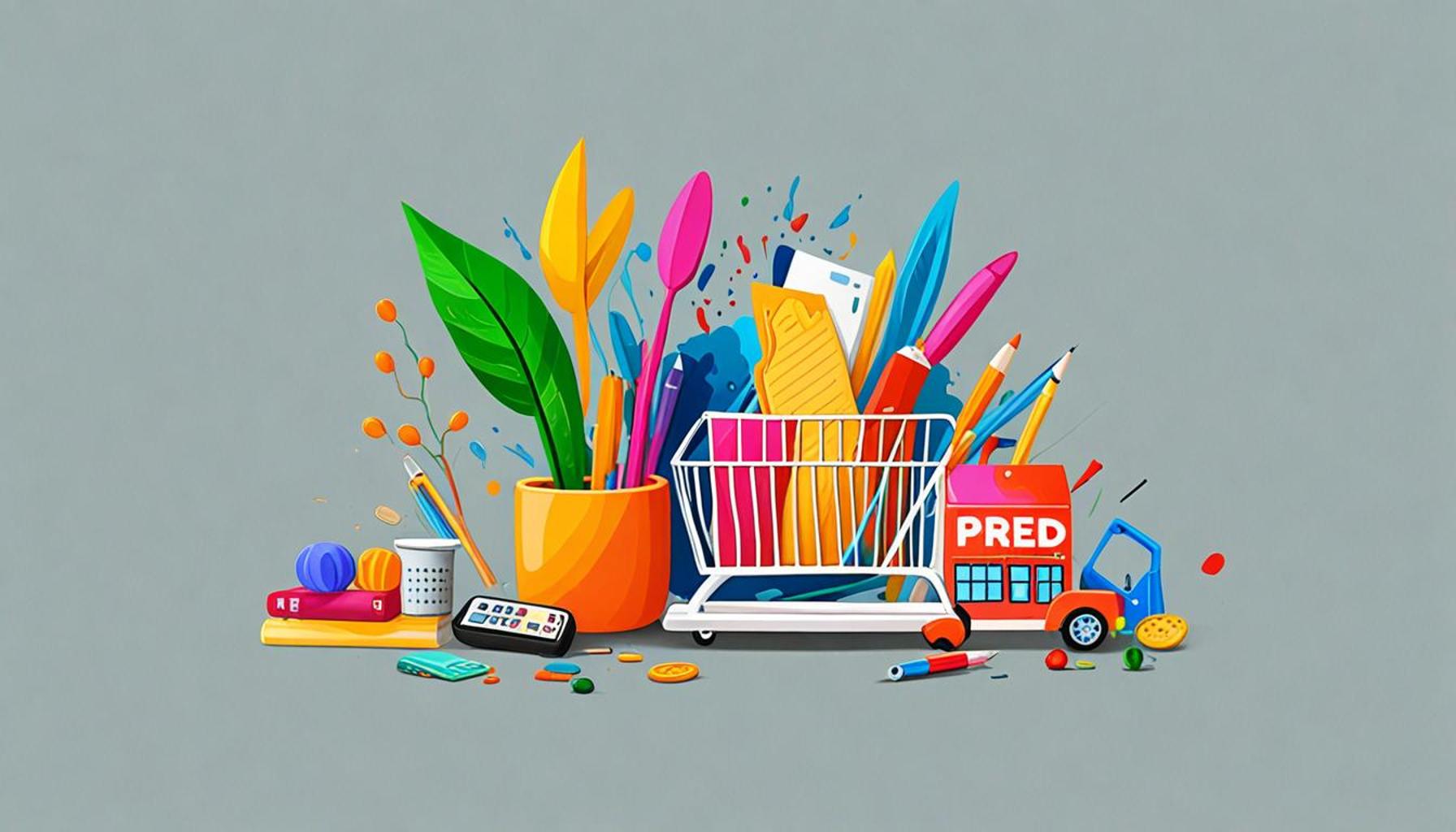Digital Minimalism: How Technology Reduction Increases Mental Clarity and Intentional Living

Understanding the Impact of Technology on Mental Clarity
The relentless pace of life in today’s digital landscape can lead to feelings of confusion and distraction. With notifications constantly vying for attention and the ever-present lure of social media, many find it challenging to maintain mental clarity. As a result, the philosophy of digital minimalism has emerged as a potential remedy, advocating for a more intentional approach to technology use. This approach encourages individuals to consciously assess their digital consumption, promoting a lifestyle that values presence over distraction.
Benefits of Digital Minimalism
Adopting a digital minimalist lifestyle can yield remarkable advantages. For example, increased concentration is one of the most significant benefits. By eliminating extraneous digital distractions—such as incessant notifications or mindless browsing—people can engage in tasks with enhanced focus. According to a study published in the journal “Cognitive Research,” individuals who limit their technology use report improvements in their ability to concentrate on work or studies.
Moreover, enhanced well-being is another crucial outcome of reducing digital clutter. A lifestyle with less screen time can lead to decreased feelings of anxiety and stress. For instance, spending time outdoors without a smartphone can foster a sense of peace and connection to nature, leading to better mental health outcomes. Journaling or participating in hobbies without the interference of technology can also create valuable opportunities for relaxation and self-reflection.
Additionally, embracing digital minimalism can result in improved relationships. The quality time spent with family and friends can strengthen emotional bonds and foster deeper connections. For example, families who establish screen-free dinners often report more engaging conversations and a sense of togetherness, allowing for stronger familial ties that withstand the pressures of modern life.
Evaluating Technology Use
The core tenet of digital minimalism is not merely reducing screen time but rather cultivating a thoughtful relationship with technology. This initiative invites individuals to critically assess which applications, platforms, or devices truly add value to their lives. It poses reflective questions: Do these tools enhance my productivity? Do they bring joy, or do they serve as a mere distraction?

Studies suggest that less screen time can lead to greater mental clarity. A University of California study found that individuals who engage in less digital consumption exhibited improved cognitive function and greater creative problem-solving abilities. The potential for long-term intentional living emerges from these findings, indicating that a more mindful approach to technology can lead to transformative changes in daily life.
Practical Steps Toward Digital Minimalism
As we navigate the principles of digital minimalism, it is crucial to implement practical strategies for reducing technology use. Some examples include setting specific “tech-free” times during the day or curating a list of must-have applications that promote productivity rather than distract from it. Activities such as reading physical books, engaging in outdoor sports, or simply enjoying quiet moments of reflection can enhance personalization in a hyper-digital world.
In summary, digital minimalism offers a pathway to reclaiming mental clarity and fostering intentional living amidst the chaos of the digital age. By exploring and adopting these practices, individuals can move towards a life filled with focus, simplicity, and well-being—even in an increasingly complex digital landscape. Join us as we continue to uncover the many facets of this transformative approach to living.
DISCOVER MORE: Click here to learn how conscious consumption can reshape your space
Transforming Your Relationship with Technology
The journey towards embracing digital minimalism begins with an introspective evaluation of our interactions with technology. In a world where devices are often considered extensions of ourselves, it is easy to lose sight of what truly matters. A crucial step in this transformation is identifying the technology that enhances life quality versus what merely serves as a distraction. This clarion call for a more calculated use of technology enables individuals to curate a therapeutic digital environment that fosters mental clarity.
Implementing the principle of digital worthiness entails evaluating each tool, app, and platform through a critical lens. Ask yourself these guiding questions:
- Does this app or device contribute positively to my life?
- How frequently do I use it, and do I feel better or worse after engaging with it?
- Can I achieve the same outcomes through offline activities?
By reflecting on these questions, individuals can start to trim down their digital lives, which can yield noticeable improvements in attention span and overall mental health. A 2020 study at Pennsylvania State University revealed that individuals who reported actively managing their gadget use experienced a notable decrease in feelings of anxiety and stress. This relationship underscores the premise of digital minimalism: that sparing ourselves from unnecessary technology can lead to a more focused and intentional existence.
Mindful Technology Consumption
Mindful consumption of technology necessitates a discerning approach to how and why we engage with our digital devices. For example, rather than scrolling through countless social media feeds for hours, individuals can designate specific times for checking updates, thereby cultivating a practice of intentional engagement. In this vein, a recent study by the American Psychological Association indicated that users who approached their devices with purpose were 30% more likely to report feelings of fulfillment compared to habitual users without a clear intention.
Implementing technology with intention often translates into more holistic life choices. Engaging in activities that directly contribute to personal goals and aspirations can increase one’s sense of accomplishment. Here are some practical ways to embrace mindful technology consumption:
- Limit social media usage to a set timeframe or specific tasks.
- Use productivity applications that align with personal or professional objectives, ensuring each tool has a meaningful purpose.
- Engage in offline activities that foster creativity, connection, and relaxation, such as painting, reading, or hiking.
By reeling in technology use and remaining mindful of our digital interactions, the potential for achieving greater mental clarity noticeably increases. Several enthusiasts of digital minimalism have reported that this strategic reduction of technology has not only simplified their routines but has positively impacted their mental and emotional well-being.
Ultimately, the path to intentional living initiated by digital minimalism is about aligning technology with our deeper values and goals. In doing so, we reclaim our time, attention, and ultimately, our lives, paving the way for a more meaningful, focused, and connected experience. Continue reading as we delve into more techniques and insights that will help you navigate this evolving landscape of digital minimalism.
| Category | Description |
|---|---|
| Mental Clarity | Removing digital distractions allows for focused thinking and problem-solving. |
| Intentional Living | Embracing mindfulness leads to more deliberate choices in daily activities. |
| Reduced Overwhelm | Less digital noise helps in managing stress and anxiety. |
| Enhanced Creativity | A clear mind fosters original thought and innovation. |
In today’s fast-paced world, the principle of digital minimalism is gaining traction as individuals seek to enhance their mental well-being. By intentionally choosing to limit technology use, people are discovering profound benefits that go beyond merely reducing screen time. For instance, minimizing digital clutter can significantly improve focus. When one is not bombarded by notifications or the urge to check social media, the capacity for deep concentration emerges. This clarity not only aids in daily tasks but can significantly impact productivity.Moreover, intentional living cultivates an awareness that encourages individuals to engage more meaningfully with their environments. Rather than reacting to external stimuli, those practicing digital minimalism actively choose how they spend their time and energy. This lifestyle opens up pathways to live more purposefully, allowing for greater fulfillment in relationships and creative endeavors.Additionally, the reduction of digital noise can also lead to lowered stress levels. A heavy, technology-laden lifestyle often contributes to feelings of anxiety; however, by adopting a more restrained approach to technology, one can establish a sense of peace and control. This newfound calm further enhances a person’s ability to think creatively and produce original work.The journey to digital minimalism invites individuals not just to eliminate distractions but also to embrace a lifestyle that fosters deep, thoughtful engagement with life itself. The practical ramifications of this shift are profound and worthy of exploration, ultimately influencing how one interacts with technology and the world.
DIVE DEEPER: Click here to explore the benefits of minimalism
Creating Digital Boundaries
Another vital aspect of achieving digital minimalism is the establishment of digital boundaries that protect our time and mental energy. In an era where notifications dominate our screens and social media is omnipresent, it becomes imperative to set limits that foster uninterrupted focus. Research published by the Journal of Applied Psychology noted that employees who enforced strict boundaries around their digital communications reported a 25% increase in productivity, highlighting the tangible benefits of reducing screen time.
Boundary setting can take various forms, from designating phone-free hours each day to adopting the “do not disturb” mode during critical focus periods. Such practices can enhance our ability to concentrate on meaningful tasks and cultivate a profound sense of presence. Consider implementing the following strategies for creating healthy digital boundaries:
- Establish specific times to check emails and messages rather than responding immediately.
- Utilize app features that limit notifications, allowing only essential alerts to reach you.
- Designate parts of your day for technology-free family or self-care times, encouraging the cultivation of real-life connections.
Incorporating these boundaries not only improves productivity but also diminishes the constant mental clutter that often arises from digital distractions. Studies have shown that a significant decrease in multitasking—often exacerbated by constant notifications—improves our cognitive performance and mental agility.
The Role of Offline Experiences
As we embrace digital minimalism, prioritizing offline experiences becomes essential in our quest for intentional living. Engaging in activities that disconnect us from the digital realm can nurture creativity, deepen relationships, and reignite our passions. Research from the Stanford University Project on Technology and Instant Gratification reveals that individuals who prioritize offline engagements tend to report higher levels of satisfaction and happiness.
Examples of offline experiences that can be enriching include:
- Participating in local community events such as art fairs, farmers’ markets, or volunteer opportunities, which facilitate stronger neighborhood ties.
- Reading physical books or journaling, which can promote reflection and deeper cognitive processing compared to reading on screens.
- Exploring nature through hiking, gardening, or outdoor sports that enhance physical health and offer a mental reset away from digital distractions.
Such offline experiences not only serve as refreshing alternatives but also reinforce our priorities, allowing us to align our daily routines with our values and aspirations. Moreover, embracing these real-world engagements fosters interpersonal connections that are often diluted in the digital landscape.
The Impact on Mental Health
Adopting a lifestyle of digital minimalism goes beyond productivity; it significantly impacts our mental health. Research indicates a direct correlation between excessive technology use and feelings of loneliness, depression, and anxiety. According to the Anxiety and Depression Association of America, roughly 60% of American adults report feeling overwhelmed by their digital consumption. Digital minimalism can be a potent antidote to this growing epidemic, providing individuals with the clarity needed to prioritize their well-being.
As we take steps to intentionally reduce our tech reliance, it profoundly shifts not only our daily habits but also our perspective on life. Embracing this approach creates space for mental clarity, unearthing a more serene existence prioritized by fulfilling interactions and meaningful experiences. By fostering an environment where technology serves a purpose, we set the stage for a healthier, more connected lifestyle.
DIVE DEEPER: Click here to discover more about conscious consumption
Conclusion
In a world where digital consumption is ubiquitous, the principles of digital minimalism emerge as a transformative approach to enhance mental clarity and foster intentional living. By deliberately reducing our technological reliance, we not only free ourselves from the overwhelming impact of constant notifications and digital distractions but also reclaim our time and mental energy. Establishing digital boundaries, as highlighted throughout this article, is crucial for cultivating focus and productivity while protecting our valuable cognitive resources.
Moreover, prioritizing offline experiences opens the door to deeper connections, creativity, and a re-engagement with our surroundings that enriches our lives. From reading books to participating in community events, these activities enhance our social bonds and overall well-being. Research shows that embracing these real-world interactions can lead to greater satisfaction and happiness, proving that the antidote to modern loneliness often lies beyond the screen.
As we consider the profound effects of excessive technology use on mental health, digital minimalism may be the key to alleviating feelings of anxiety and isolation. By taking mindful steps to reduce our digital engagement, we can shift our perspectives, prioritize our values, and create space for experiences that truly matter. The journey towards intentional living, guided by digital minimalism, empowers us to lead fuller lives and fosters a healthier relationship with technology. Now is the time to reflect on our digital habits and embrace a simpler, more connected existence—one that brings peace of mind and clarity to our lives.


